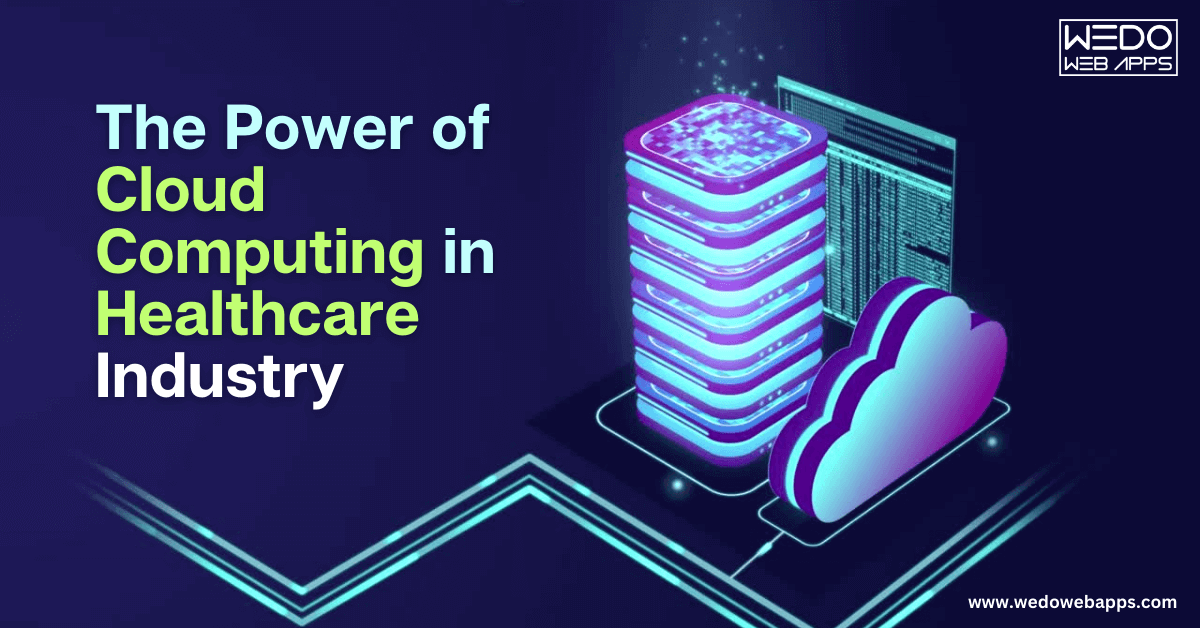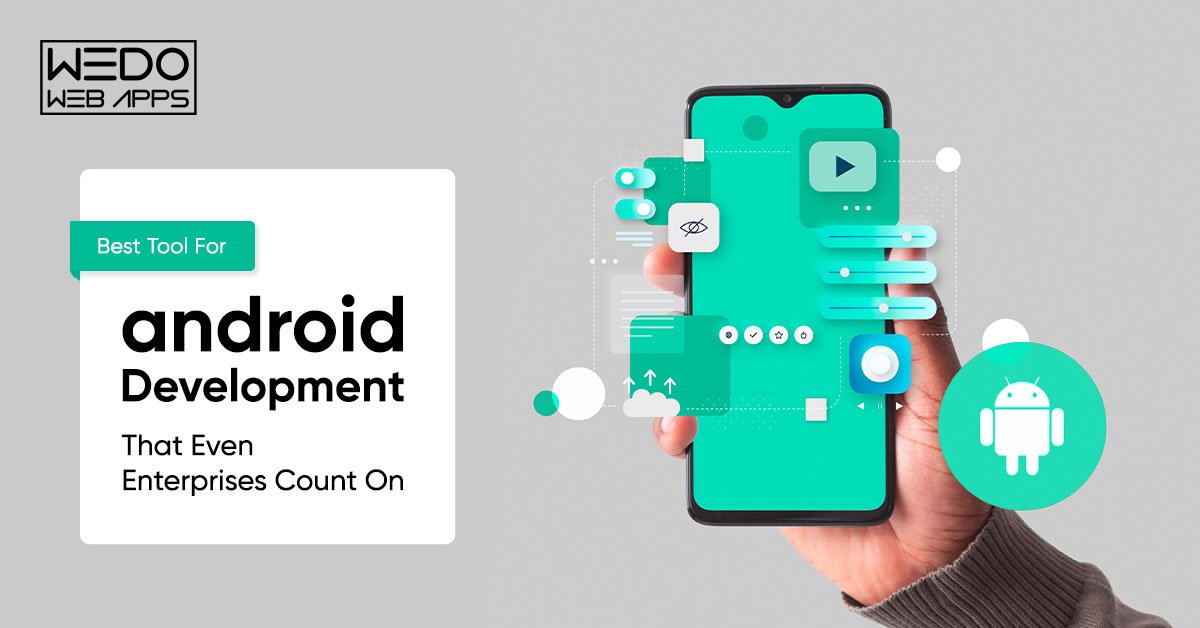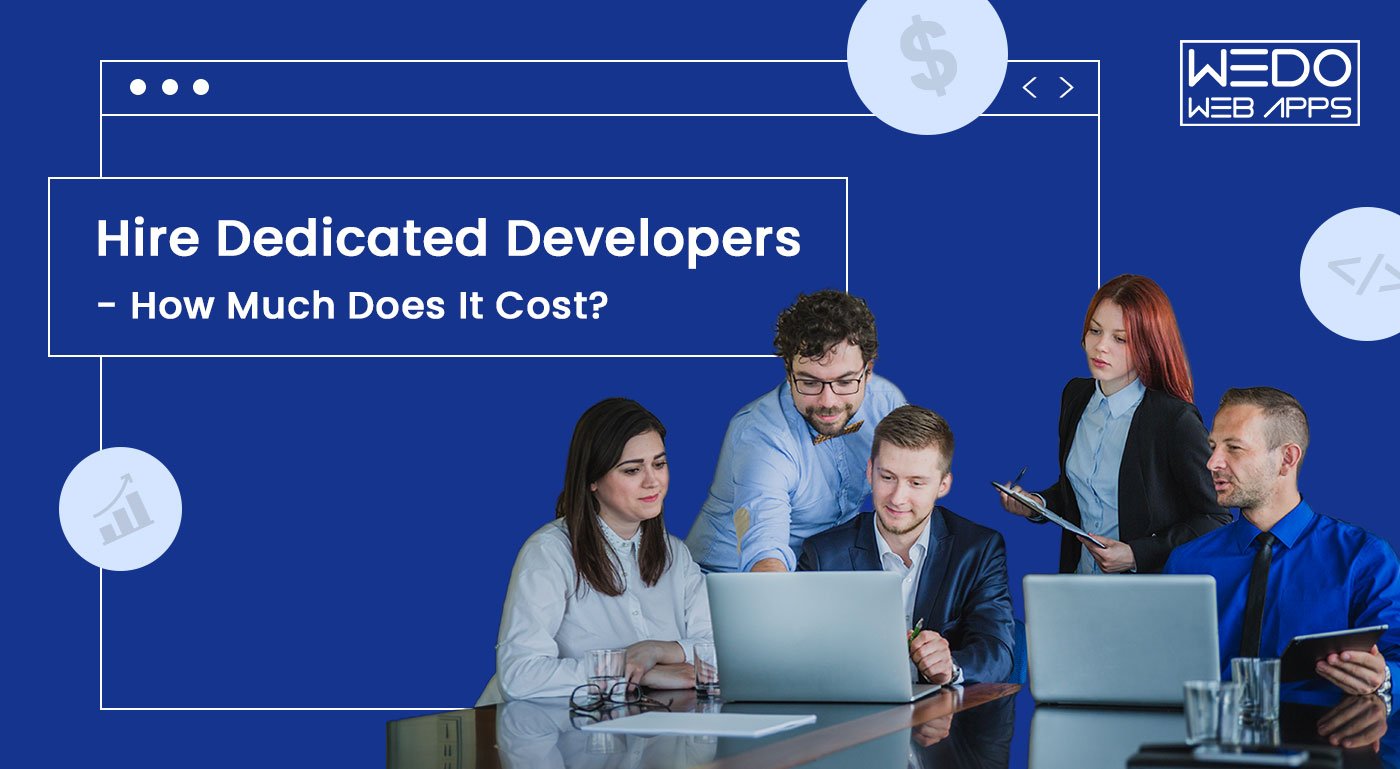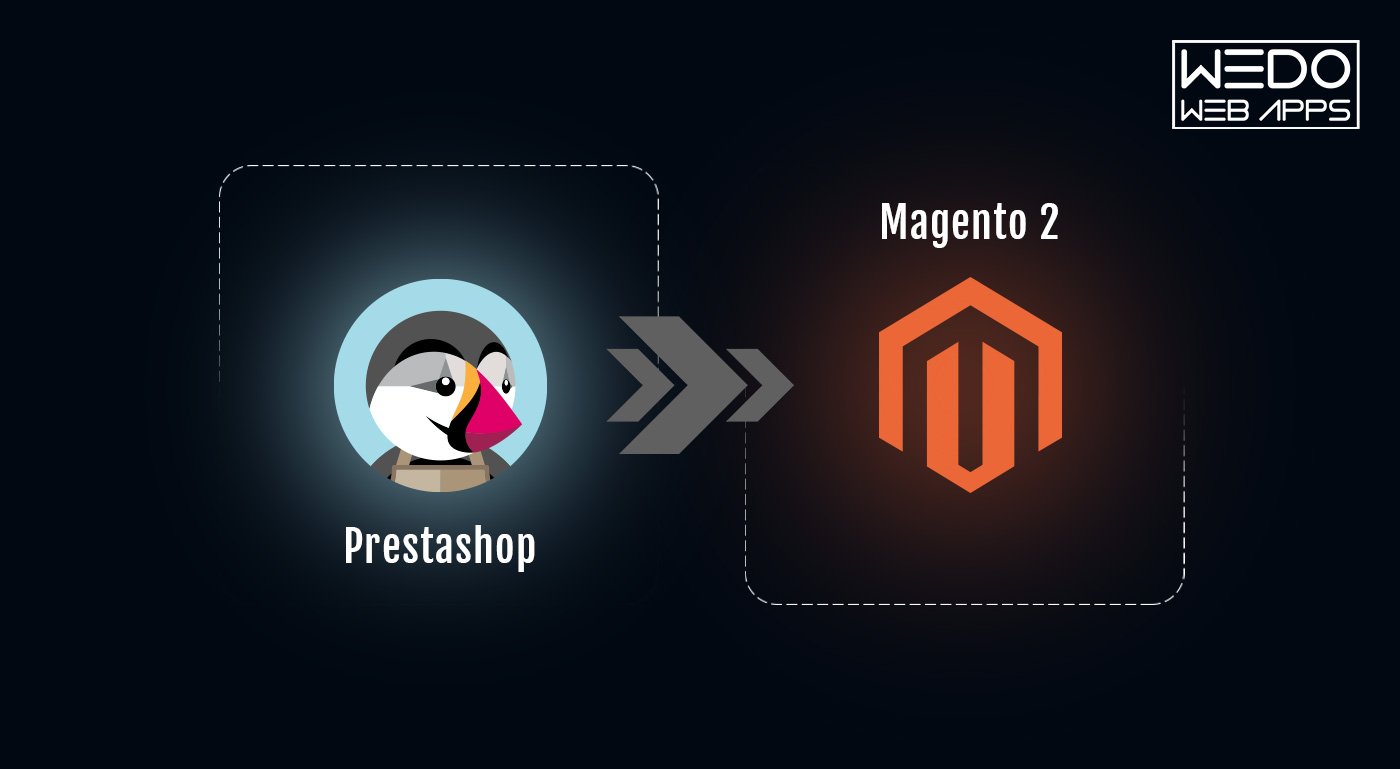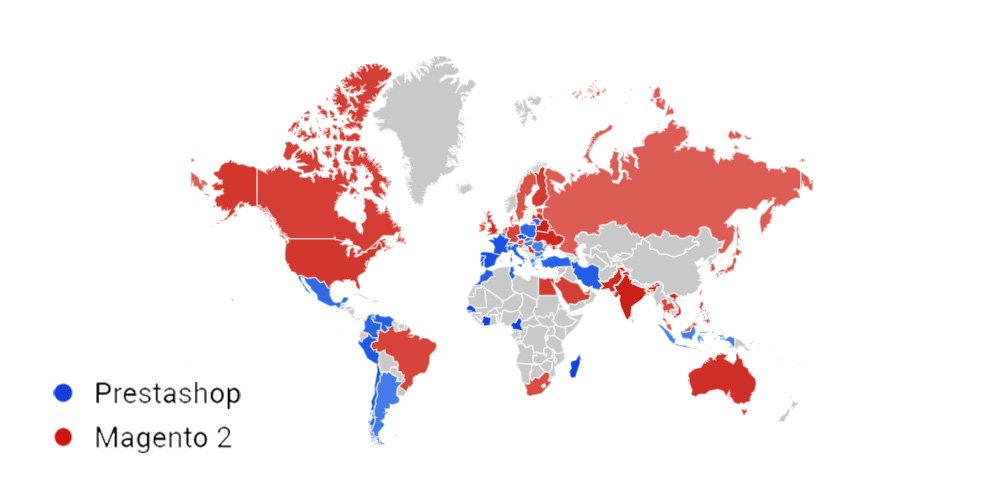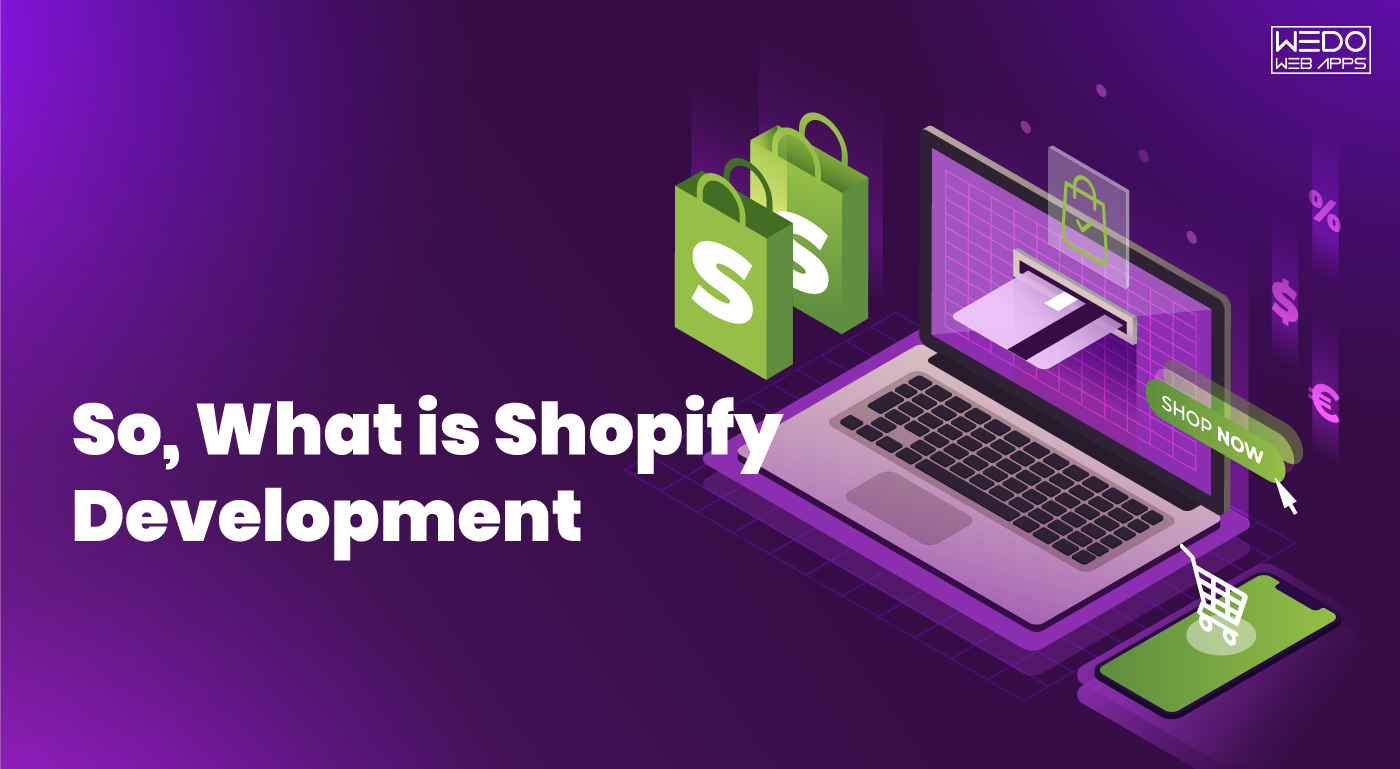In today’s fast-paced digital age, having a team of dedicated developers can be the difference between success and failure for your business.
But, how much does it cost tohire dedicated developers?
In this article, we will explore the various factors that influence the cost of hiring dedicated developers and provide you with insights that can help you make an informed decision.
Now here’s the twist:
In this blog you will get to know the cost to hire programmers some of the top developers having different skills:
- Hire iOS Developer
- Hire Android Developer
- Hire REACT NATIVE Developer
- Hire Flutter Developer
- Hire IONIC Developer
- Hire E-Commmerce Developer
- Hire Woocommerce Developer
- Hire Magento Developer
- Hire WordPress Developer
- Hire Shopify Developer
- Hire BigCommerce Developer
- Hire Front-End Developers
- Hire Back-end Developers
- Hire Laravel Developer
- Hire Code Igniter Developer
- Hire ReactJS Developer
- Hire AngularJS Developer
- Hire VueJS Developer
- Hire NodeJS Developer
- Hire Progressive Web Application Developer
- Hire PHP Developers
- Hire Kotlin Developer
- Hire Dedicated Native Mobile App Developers
- Hire Swift Developer
- Hire Dedicated HTML5 App Developers
So, whether you are a startup or an established business, read on to discover the costs associated with hiring dedicated developers and their skills to consider getting the most value for your investment. Along with this you also get answers to some of the most asked questions which people have:
- How To Hire Developers For A Startup?
- How To Hire A Software Developer?
- How To Hire A Programmer with 3-5 years of experience?
- How To Hire A Developer for front end and back end developer?
- How Much Does It Cost To Hire A Programmer? [For different skills]
So let’s get started
Hire Dedicated Developers? Look At The Top Skills To Evaluate And Average Cost
With 1.36 billion iPhone users worldwide, iOS app development has become a lucrative industry. However, finding a competent iOS developer who can turn your app idea into a high-quality product is easier said than done.
iPhone’s users are known to spend a significant amount of money on apps and premium features, and that’s why it’s crucial that your apps offer them a flawless experience.
But, how do you ensure that the iOS developer you hire got considerable skills to make feature-rich iOS apps, and how much does it cost to develop iOS apps? Find out everything below:
Right Skills To Hire An iOS Developer
-
Swift is the Boss for iOS Developers
Any iOS developer worth their salt should be a Swift pro. It’s the main language for iOS app development, and a good developer should know its ins and outs like the back of their hand.
If a developer isn’t tight with Xcode, then they’re not a true iOS developer. It’s the tool they use to build their iOS apps, and they need to know it inside and out to create quality apps.
-
Frameworks are their friends
iOS has loads of built-in frameworks that developers can use to build their apps. An experienced iOS developer should know which ones to use to achieve the functionality they want.
-
They know what looks good
An iOS developer should have an eye for design and know how to create an interface that users will love. They should make sure their apps are easy to use and provide an awesome user experience.
Any good iOS developer should know how to use Git or other version control tools. It’s essential to keep track of changes to the codebase and ensure that everything is organized and in check.
How Much Does It Cost To Hire A Programmer for iOS app development?
Cost Of Hiring An iOS Developer In Different Regions or the approximate hourly rates for iOS developers based on different regions are:
- North America: $80 – $250 per hour
- Europe: $60 – $200 per hour
- Australia: $75 – $150 per hour
- Asia: $30 – $100 per hour
So, you’ve got an idea for an Android app, and you need to hire a rock star Android developer to make it happen. But where do you start?
With Android being the most popular mobile operating system with 3.3 billion globally, it’s important to create an app that stands out from the crowd.
Therefore, with that many Android developers out there, finding the right one can feel like a needle in a haystack. Don’t worry, we’ve got your back!
Right Skills To Look For While Hiring An Android Developer
A great Android developer should have mad skills in both Java and Kotlin. These are the main programming languages used in Android app development.
-
Know-How of Android Architecture Components
A pro Android developer should know their way around the Android Architecture Components. Stuff like LiveData, ViewModel, Room, and Navigation should be second nature to them.
-
Familiarity with Android SDK
A kick-ass Android developer should be well-versed in the Android SDK. They should know how to use it like a pro to create awesome apps.
-
Experience with REST APIs
REST APIs are an essential part of Android app development. A top-notch Android developer should have experience working with REST APIs to get data from servers.
-
Understanding of Material Design
A great Android developer should know all about Google’s Material Design guidelines. They should be able to create user interfaces that follow these guidelines and look slick as hell.
Android Studio is where the magic happens in Android app development. An amazing Android developer should be able to whip up apps in no time using this environment.
Cost Of Hiring An Android Developer In Different Regions
The approximate hourly rates for Android developers based on different regions:
- North America: $80 – $200 per hour
- Europe: $60 – $150 per hour
- Australia: $70 – $160 per hour
- Asia: $15 – $50 per hour
If you are looking to build a website or web application on ReactJS, a popular JavaScript library used for building user interfaces, and it’s used by developers worldwide.
You have to have a killer ReactJS developer for it. But let’s be real, finding the perfect ReactJS developer for your project can be tough, especially if you’re not a tech wizard.
Right Skills To Look For While Hiring A ReactJS Developer
A top-notch ReactJS developer needs to be a JavaScript pro. After all, React JS is a JavaScript library, so they know their stuff.
-
ReactJS Framework Mastery
A ReactJS developer should be a master of the ReactJS framework. That means they should know all about React Components, JSX, Virtual DOM, and React Router.
-
State Management Library Know-How
Redux and MobX are the bee’s knees when it comes to state management libraries in ReactJS development. A ReactJS developer should be experienced with these libraries.
A ReactJS developer should be familiar with front-end technologies like HTML, CSS, and JavaScript frameworks such as Angular and Vue. They should be able to work magic with these tools.
REST APIs are a must for ReactJS app development. A ReactJS developer should have experience working with REST APIs to get data from servers.
A ReactJS developer should be familiar with build tools like Webpack, Babel, and NPM. They should be able to work their way around these tools like a pro.
Cost Of Hiring An ReactJS Developer In Different Regions
The approximate hourly rates for ReactJS developers based on different regions:
- North America: $80 – $200 per hour
- Europe: $60 – $150 per hour
- Australia: $70 – $160 per hour
- Asia: $15 – $50 per hour
Finding the right AngularJS developer for your project can be a challenging task, especially if you’re looking to build a dynamic and robust web application.
Let’s take you through the essential skills and qualities you need to look for when hiring an AngularJS developer.
Right Skills To Look For While Hiring An AngularJS Developer
A Skilled AngularJS developer, also must be a JavaScript wizard. Because AngularJS is also a JavaScript framework, they need to be able to work their magic with the language.
-
AngularJS Framework Ninja
An AngularJS developer should be a master of the AngularJS framework, including Angular Components, Directives, Services, and Dependency Injection. They should be able to use these tools to build great apps.
-
State Management Library Jedi
NgRx and Redux are the top state management libraries used in AngularJS development. An AngularJS developer should have experience working with these libraries to make sure their apps run smoothly.
An AngularJS developer should be familiar with front-end technologies like HTML, CSS, and JavaScript frameworks such as React and Vue. They should be able to work with these tools like a pro.
REST APIs are crucial for AngularJS app development. An AngularJS developer should have experience working with REST APIs to get data from servers.
An AngularJS developer should be familiar with build tools like Webpack, Babel, and NPM. They should be able to use these tools to streamline their development process and make their apps even better.
Cost Of Hiring An AngularJS Developer In Different Regions
The approximate hourly rates for AngularJS developers based on different regions:
- North America: $80 – $200 per hour
- Europe: $60 – $150 per hour
- Australia: $70 – $160 per hour
- Asia: $15 – $50 per hour
VueJS has become increasingly popular in recent years due to its simplicity, flexibility, and high-performance capabilities. It is similar to React, and Angular we discussed earlier.So let’s take you through the essential skills and qualities you need to look for when hiring a VueJS developer.
Right Skills To Look For While Hiring A VueJS Developer
-
Proficiency in JavaScript
VueJS is a JavaScript framework, so a strong command of JavaScript is essential for any VueJS developer.
-
Knowledge of VueJS Framework
A VueJS developer should have a good understanding of the VueJS framework, including Vue Components, Vue Directives, Vue Router, and Vuex.
-
Familiarity with State Management Libraries
Vuex is the most popular state management library used in VueJS development. A VueJS developer should have experience working with this library.
-
Experience with Front-end Technologies
A VueJS developer should have experience working with front-end technologies such as HTML, CSS, and JavaScript frameworks such as React and Angular.
-
Understanding of REST APIs
REST APIs are essential for VueJS app development. A VueJS developer should have experience in working with REST APIs to fetch data from a server.
A VueJS developer should be familiar with build tools such as Webpack, Babel, and NPM.
Cost Of Hiring A VueJS Developer In Different Regions
The approximate hourly rates for VueJS developers based on different regions:
- North America: $80 – $200 per hour
- Europe: $60 – $150 per hour
- Australia: $70 – $160 per hour
- Asia: $15 – $50 per hour
You’re not alone in looking to hire a NodeJS developer.
But with the rising demand for NodeJS web applications, finding a skilled developer who can deliver high-quality results can be a challenge.
If you’re not sure where to start? Here are:
Right Skills To Look For While Hiring A NodeJS Developer
-
Proficiency in JavaScript
NodeJS is also a JavaScript-based runtime environment, so a strong command of JavaScript is a must for any NodeJS developer.
-
Knowledge of NodeJS Framework
A NodeJS developer should have a good understanding of the NodeJS framework, including Node Modules, Express, and Socket.IO.
-
Understanding of Asynchronous Programming
NodeJS is asynchronous, so a NodeJS developer should have experience in working with asynchronous programming.
-
Familiarity with Databases
A NodeJS developer should have experience working with databases such as MySQL, MongoDB, and PostgreSQL.
-
Experience with Front-end Technologies
A NodeJS developer should have experience working with front-end technologies such as HTML, CSS, and JavaScript frameworks such as React and Angular.
A NodeJS developer should be familiar with build tools such as Grunt, Gulp, and NPM.
Cost Of Hiring A NodeJS Developer In Different Regions
The approximate hourly rates for NodeJS developers based on different regions:
- North America: $80 – $200 per hour
- Europe: $60 – $150 per hour
- Australia: $70 – $160 per hour
- Asia: $15 – $50 per hour
React Native apps are in high demand because of its cross-platform functionality. But choosing the right React Native app developer for your application is very important and confusing for React Native also.
So Below are:
Right Skills To Look For While Hiring A React Native Developer
-
Proficiency in JavaScript
A React Native developer should possess strong proficiency in JavaScript since React Native is based on JavaScript.
-
Knowledge of React Native Framework
Understanding the React Native framework, including React Native Components, React Native APIs, and React Navigation, is vital for any React Native developer.
-
Familiarity with Mobile Development
Familiarity with mobile development, specifically iOS and Android platforms, is essential for a React Native developer.
-
Understanding of Native Modules
Experience working with Native Modules is a must-have skill for a React Native developer as React Native allows for the integration of Native Modules.
-
Experience with Front-end Technologies
A React Native developer should have experience with front-end technologies like HTML, CSS, and JavaScript frameworks like React and Angular.
Knowing how to use build tools like Xcode, Android Studio, and NPM is crucial for a React Native developer.
Cost Of Hiring A React Native Developer In Different Regions
The approximate hourly rates for React Native developers based on different regions:
- North America: $80 – $200 per hour
- Europe: $60 – $150 per hour
- Australia: $70 – $160 per hour
- Asia: $15 – $50 per hour
If you’re planning to build a web application using PHP, a server side programming language, it’s essential to hire a skilled PHP developer who can deliver high-quality results.
Here Is The List Of Skills To Look For While Hiring A PHP Developer
-
PHP and PHP Frameworks Pro
PHP developers who are masters of the PHP language must have experience in popular PHP frameworks such as Laravel, Symfony, and CodeIgniter.
It’s important for a PHP developer to have worked with databases like MySQL, PostgreSQL, and MongoDB.
Object-Oriented Programming is fundamental in PHP development. A PHP developer should be experienced in working with OOP principles.

A PHP developer should have experience working with front-end technologies like HTML, CSS, and JavaScript.
Cost Of Hiring A PHP Developer In Different Regions
The approximate hourly rates for PHP developers based on different regions:
- North America: $80 – $200 per hour
- Europe: $60 – $150 per hour
- Australia: $70 – $160 per hour
- Asia: $15 – $50 per hour
Flutter Developers are high in demand for natively compiled mobile applications for both iOS and Android platforms using a single codebase.
Here is a comprehensive list of what to look for in a Flutter developer:
Right Skills To Look For While Hiring A Flutter Developer
If you’re looking for a Flutter developer, make sure they have a solid grasp of Dart since Flutter is a Dart-based framework.
-
Knowledge of Flutter Framework
Also, they should be familiar with the Flutter framework, including the Flutter Widgets, Animations, and Navigation.
-
Familiarity with Mobile Development
Since Flutter is a mobile development platform, experience with iOS and Android is a must-have.
-
Understanding of Native Modules
Native Modules are an important part of Flutter, so a Flutter developer should have experience working with them.
-
Experience with Front-end Technologies
Lastly, a Flutter developer should have experience working with front-end technologies like HTML, CSS, and JavaScript frameworks such as React and Angular.
Cost Of Hiring A Flutter Developer In Different Regions
The approximate hourly rates for Flutter developers based on different regions:
- North America: $80 – $200 per hour
- Europe: $60 – $150 per hour
- Australia: $70 – $160 per hour
- Asia: $15 – $50 per hour
Kotlin’s concise syntax, null safety, and interoperability with Java make it an ideal choice for building robust and scalable Android applications.
But choosing a professional Kotlin developer is not that easy, look for the right skills before hiring one.
Right Skills To Look For While Hiring A Kotlin Developer
Obviously, a Kotlin developer needs to be fluent in Kotlin. Make sure they can code in Kotlin without any issues.
-
Knowledge of Android Development
Kotlin is becoming increasingly popular for Android app development, so your Kotlin developer should have experience working with Android development platforms like Android Studio.
-
Object-Oriented Programming (OOP) Skills
OOP is a fundamental concept in Kotlin development, so a Kotlin developer should be comfortable working with OOP principles.
Kotlin and Java can work together, so a Kotlin developer should have experience working with Java.
A Kotlin developer should have experience working with front-end technologies like HTML, CSS, and JavaScript.
A Kotlin developer should be familiar with build tools like Gradle and Maven
Cost Of Hiring A Kotlin Developer In Different Regions
The approximate hourly rates for Kotlin developers based on different regions:
- North America: $80 – $200 per hour
- Europe: $60 – $150 per hour
- Australia: $70 – $160 per hour
- Asia: $15 – $50 per hour
Magento is one of the most popular e-commerce platforms, and with its increasing demand if you’re planning to build or migrate an online store using Magento, it’s essential to hire a skilled Magento developer who can bring your vision to life.
Right Skills To Look For While Hiring A Magento Developer
Magento is built on PHP, so any Magento developer worth their salt needs to have a strong command of PHP.
-
Knowledge of Magento Framework
Your developer should have a good understanding of the Magento framework, including the layout, blocks, and templates.
-
Understanding of Object-Oriented Programming (OOP)
OPP is an important concept in Magento development, so your developer should be experienced with OOP principles.
Magento uses MySQL for data storage, so your developer should know their way around MySQL.
-
Experience with Front-end Technologies
Your developer should have experience working with front-end technologies such as HTML, CSS, and JavaScript.
-
Knowledge of Magento Extensions
Magento has a massive extension ecosystem, so your developer should have experience working with Magento extensions.
Cost Of Hiring A Magento Developer In Different Regions
The approximate hourly rates for Magento developers based on different regions:
- North America: $80 – $200 per hour
- Europe: $60 – $150 per hour
- Australia: $70 – $160 per hour
- Asia: $15 – $50 per hour
Shopify powers over a million online e-commerces stores worldwide.
You’ll need a skilled developer who can create a user-friendly and visually appealing website and skyrocket your e-commerce.
Here are the right skills to consider before going for one:
Right Skills To Look For While Hiring A Shopify Developer
A Shopify developer should have a deep understanding of the Shopify platform, including its features, functionalities, and limitations.
Liquid is the templating language used by Shopify, so a Shopify developer should have experience working with Liquid.
-
Proficiency in HTML/CSS/JavaScript
A Shopify developer should have experience working with front-end technologies such as HTML, CSS, and JavaScript.
Shopify has a robust API that allows developers to build custom integrations, so a Shopify developer should have experience working with APIs.
-
Knowledge of E-commerce Best Practices
A Shopify developer should have a good understanding of e-commerce best practices, including conversion rate optimization, user experience design, and payment gateway integration.
-
Familiarity with Shopify Themes and Apps
Shopify has a vast ecosystem of themes and apps, so a Shopify developer should have experience working with Shopify themes and apps.
Cost Of Hiring A Shopify Developer In Different Regions
The approximate hourly rates for Shopify developers based on different regions:
- North America: $80 – $200 per hour
- Europe: $60 – $150 per hour
- Australia: $70 – $160 per hour
- Asia: $15 – $50 per hour
WordPress is the most popular content management system (CMS) on the internet, powering over 40% of all websites.
If you’re looking to build a website or a blog using WordPress, you’ll need a skilled developer who can help you create a visually appealing and user-friendly website.
Right Skills To Look For While Hiring A WordPress Developer
-
Deep Understanding of WordPress
A WordPress developer should be a walking encyclopedia when it comes to WordPress, including all the latest features, functionalities, and limitations.
PHP is the backbone of WordPress, so a WordPress developer should be well-versed in PHP and its syntax.
-
Knowledge of WordPress APIs
WordPress has some killer APIs that help developers to create custom integrations, so a WordPress developer should know their way around APIs.
-
Mad Skills in HTML/CSS/JavaScript
A WordPress developer should have top-notch front-end development skills such as HTML, CSS, and JavaScript.
-
Familiarity with WordPress Themes and Plugins
WordPress has an extensive collection of themes and plugins, so a WordPress developer should have experience working with them.
As a popular platform, WordPress is always under attack from hackers. Therefore, a WordPress developer should know security best practices and keep the site safe and secure.
Cost Of Hiring A WordPress Developer In Different Regions
The approximate hourly rates for WordPress developers based on different regions:
- North America: $80 – $200 per hour
- Europe: $60 – $150 per hour
- Australia: $70 – $160 per hour
- Asia: $15 – $50 per hour
In today’s world, having an online store is essential for any business looking to expand its reach and increase revenue.
To build a successful e-commerce website, you’ll require an E-commerce developer who understands the complexities of online shopping and can create a platform that provides a seamless user experience.
Right Skills To Look For While Hiring A E-commerce Developer
-
Pro at E-commerce Platforms
Your e-commerce developer should have experience working with popular platforms like Shopify, WooCommerce, Magento, or whatever platform you’re using.
An e-commerce developer should be knowledgeable about web development technologies such as HTML, CSS, and JavaScript.
-
Payment Gateway Experience
Your developer should be able to integrate payment gateways like PayPal and Stripe without breaking a sweat.
E-commerce sites require optimization for search engines, so your developer should know a thing or two about SEO.
E-commerce sites often deal with sensitive customer data, so your developer should be familiar with security best practices.
Cost Of Hiring A E-commerce Developer In Different Regions
The approximate hourly rates for E-commerce developers based on different regions:
- North America: $80 – $200 per hour
- Europe: $60 – $150 per hour
- Australia: $70 – $160 per hour
- Asia: $15 – $50 per hour
Woocommerce made creating an online store quick and easy. Being the most important ecommerce plugin for WordPress, hiring a knowledgeable developer is not that easy.
Right Skills To Look For While Hiring A Woocommerce Developer
A WooCommerce developer should be a pro at working with the WooCommerce platform and know all the ins and outs.
Since WooCommerce is a WordPress plugin, a WooCommerce developer should have a solid understanding of WordPress development.
A WooCommerce developer should be skilled in the front-end development techs, like HTML, CSS, and JavaScript.
A WooCommerce developer should know PHP like the back of their hand and have experience working with databases such as MySQL.
A WooCommerce developer should be experienced in integrating payment gateways, like PayPal, Stripe, and more.
To get WooCommerce sites ranking on search engines, a WooCommerce developer should know their way around SEO principles.
WooCommerce sites deal with sensitive customer data, so a WooCommerce developer should have a strong understanding of security best practices
Cost Of Hiring A Woocommerce Developer In Different Regions
The approximate hourly rates for Woocommerce developers based on different regions:
- North America: $80 – $200 per hour
- Europe: $60 – $150 per hour
- Australia: $70 – $160 per hour
- Asia: $15 – $50 per hour
With its intuitive interface, powerful features, and flexibility, BigCommerce is an excellent choice for businesses of all sizes.
This excellency is also important when choosing the right BigCommerce Developer.
Right Skills To Look For While Hiring A BigCommerce Developer
-
Proficiency in BigCommerce
A BigCommerce developer should have experience working with the BigCommerce platform and be familiar with its features and capabilities.
A BigCommerce developer should be skilled in front-end development technologies such as HTML, CSS, and JavaScript.
A BigCommerce developer should be proficient in PHP and have experience working with databases such as MySQL.
-
Experience with Payment Gateways
A BigCommerce developer should have experience integrating payment gateways such as PayPal, Stripe, etc.
BigCommerce sites require optimization for search engines, so a BigCommerce developer should have an understanding of SEO principles.
-
Understanding of Security Best Practices
BigCommerce sites often deal with sensitive customer data, so a BigCommerce developer should have an understanding of security best practices.
-
Knowledge of Theme Development
A BigCommerce developer should have experience with customizing and developing BigCommerce themes.
Cost Of Hiring A BigCommerce Developer In Different Regions
The approximate hourly rates for BigCommerce developers based on different regions:
- North America: $80 – $200 per hour
- Europe: $60 – $150 per hour
- Australia: $70 – $160 per hour
- Asia: $15 – $50 per hour
A front-end developer will be responsible for creating the user interface, design, and functionality of your client-side web applications.
So unless you don’t care for the user experience of your website, here are some tips to finding the right Front-End Developer.
Right Skills To Look For While Hiring A Front-End Developer
-
HTML, CSS, and JavaScript Mastery
A front-end developer should be a master at these three technologies.
A front-end developer should know how to make designs that work on different devices and screen sizes.
-
Understanding of CSS Preprocessor
A front-end developer should have experience with CSS preprocessors such as Sass or Less.
-
Front-End Framework Familiarity
A front-end developer should be comfortable using popular frameworks like React, Angular, or Vue.
A front-end developer should know how to create interfaces that are easy to use and intuitive.
A front-end developer should know how to work with APIs to get and use data in websites or apps.”
Cost Of Hiring A Front-End Developer In Different Regions
The approximate hourly rates for Front-End developers based on different regions:
- North America: $80 – $200 per hour
- Europe: $60 – $150 per hour
- Australia: $70 – $160 per hour
- Asia: $15 – $50 per hour
Back-End developers are similarly responsible for the functionality of your server-side web applications.
So again, unless you don’t want smooth backend functionality for your website, here are some tips to finding the right Back-End Developer.
Right Skills To Look For While Hiring A Back-End Developer
-
Proficiency in a Back-End Language
A back-end developer should have expertise in at least one programming language such as PHP, Python, Ruby, Java, or Node.js.
A back-end developer should have experience working with databases such as MySQL, MongoDB, or PostgreSQL.
-
Experience with Server-Side Frameworks
A back-end developer should have experience working with popular server-side frameworks such as Ruby on Rails, Django, or Laravel.
-
Understanding of API Design and Development
A back-end developer should have experience creating and working with APIs to facilitate communication between different systems and services.
-
Knowledge of Security Best Practices
A back-end developer should have an understanding of security best practices and be able to implement security measures to protect user data.
-
Ability to Work with Front-End Technologies
A back-end developer should have a basic understanding of front-end technologies such as HTML, CSS, and JavaScript to effectively collaborate with front-end developers.

Cost Of Hiring A Back-End Developer In Different Regions
The approximate hourly rates for Back-End developers based on different regions:
- North America: $80 – $200 per hour
- Europe: $60 – $150 per hour
- Australia: $70 – $160 per hour
- Asia: $15 – $50 per hour
As Ionic is built on top of one of the top frameworks AngularJS and Apache Cordova. It is equally important to look for an IONIC developer wisely.
Right Skills To Look For While Hiring A IONIC Developer
-
Mad Ionic Framework Skills
If you’re looking for an Ionic developer, make sure they’re a pro at using the Ionic Framework, which is like the superstar of open-source frameworks for building mobile apps.
Since Ionic is built on top of Angular, a top-notch Ionic developer should have Expertise in Angular.
-
HTML, CSS, and JavaScript Wizardry
An Ionic developer should also have a super-strong grip on HTML, CSS, and JavaScript since these bad boys are essential for mobile app development.
-
Experience with Cordova and Capacitor
Cordova and Capacitor are like the Batman and Robin of plugins that allow access to native device features when building hybrid mobile apps. So a skilled Ionic developer should have experience working with these two sidekicks.
An Ionic developer should have a sharp eye for mobile design principles and be able to create beautiful, engaging user interfaces.
A professional Ionic developer should have a deep understanding of mobile app development best practices, including performance optimization, testing, and debugging.
Cost Of Hiring A IONIC Developer In Different Regions
The approximate hourly rates for IONIC developers based on different regions:
- North America: $80 – $200 per hour
- Europe: $60 – $150 per hour
- Australia: $70 – $160 per hour
- Asia: $15 – $50 per hour
If you’re planning to build a web application using Laravel, a PHP framework used for developing web applications. , then hiring a Laravel developer is a crucial step.
Right Skills To Look For While Hiring A Laravel Developer
A skilled Laravel developer should be proficient in using the Laravel Framework, which is a popular PHP framework for building web applications.
Since Laravel is built on top of PHP, a skilled Laravel developer should have strong proficiency in PHP.
-
Knowledge of HTML, CSS, and JavaScript
A skilled Laravel developer should also have a strong grasp of HTML, CSS, and JavaScript since these technologies are used heavily in the development of web applications.
-
Understanding of Relational Databases
Laravel uses the Eloquent ORM to interact with relational databases such as MySQL and PostgreSQL. A skilled Laravel developer should have a strong understanding of how to work with these databases.
-
Knowledge of RESTful API Development
A skilled Laravel developer should have experience building RESTful APIs using Laravel’s built-in functionality.
-
Understanding of Web Development Best Practices
A skilled Laravel developer should have an understanding of web development best practices, including security, performance optimization, testing, and debugging.
Cost Of Hiring A Laravel Developer In Different Regions
The approximate hourly rates for Laravel developers based on different regions:
- North America: $80 – $200 per hour
- Europe: $60 – $150 per hour
- Australia: $70 – $160 per hour
- Asia: $15 – $50 per hour
CodeIgniter is a popular choice for building scalable and secure web applications quickly.
If you’re looking to build a web application using the CodeIgniter framework, you’ll need to hire a competent developer.
Right Skills To Look For While Hiring A Codeigniter Developer
Your CodeIgniter developer should know their way around the CodeIgniter Framework, which is a super popular PHP framework for building web applications.
Since CodeIgniter is built on top of PHP, a skilled CodeIgniter developer should be a PHP master.
-
HTML, CSS, and JavaScript Knowledge
A CodeIgniter developer should also be a pro at HTML, CSS, and JavaScript since these technologies are used a ton in web application development.
-
Relational Databases Understanding
CodeIgniter uses the Active Record pattern to interact with relational databases like MySQL and PostgreSQL. A skilled CodeIgniter developer should know how to work with these databases like a boss.
-
RESTful API Development Knowledge
A skilled CodeIgniter developer should be experienced in building RESTful APIs using CodeIgniter’s built-in functionality.
-
Web Development Best Practices Understanding
A skilled CodeIgniter developer should know the best practices for web development, including security, performance optimization, testing, and debugging.
Cost Of Hiring A Codeigniter Developer In Different Regions
The approximate hourly rates for CodeIgniter developers based on different regions:
- North America: $80 – $200 per hour
- Europe: $60 – $150 per hour
- Australia: $70 – $160 per hour
- Asia: $15 – $50 per hour
With the increasing usage of mobile devices and the internet, businesses are now focusing on delivering a seamless user experience across different platforms.
Hiring a skilled Progressive Web Application developer can help you create an engaging and responsive web application that performs seamlessly across different devices and platforms.
Right Skills To Look For While Hiring A Progressive Web Application Developer
-
Proficiency in JavaScript
A skilled PWA developer should have strong proficiency in JavaScript, which is the primary language used in PWA development.
-
Understanding of Service Workers
Service workers are a key component of PWA development. A skilled PWA developer should have a strong understanding of how to use service workers to implement features such as offline functionality and push notifications.
-
Knowledge of Progressive Enhancement
Progressive enhancement is a design philosophy that emphasizes providing a basic, functional experience for all users while also providing enhanced features for users with more capable devices. A skilled PWA developer should have an understanding of how to use progressive enhancement in PWA development.
-
Familiarity with Web APIs:
PWAs often rely on web APIs such as the Geolocation API and the Notification API. A skilled PWA developer should be familiar with these and other web APIs.
-
Knowledge of Web Development Best Practices
A skilled PWA developer should have an understanding of web development best practices, including security, performance optimization, testing, and debugging.
Cost Of Hiring A Progressive Web Application Developer In Different Regions
The approximate hourly rates for Progressive Web Application developers based on different regions:
- North America: $80 – $200 per hour
- Europe: $60 – $150 per hour
- Australia: $70 – $160 per hour
- Asia: $15 – $50 per hour
Developing a high-quality mobile app requires a dedicated and experienced native mobile app developer who understands the intricacies of app development and has the necessary skills to build a robust and reliable app.
Right Skills To Look For While Hiring A Dedicated Native Mobile App Developer
-
Expertise in Programming Languages
A skilled native mobile app developer should have high Expertise in programming languages such as Java, Kotlin (for Android) or Objective-C, Swift (for iOS).
-
Knowledge of Mobile App Frameworks
He also should have knowledge of popular mobile app frameworks such as React Native or Xamarin.
-
Experience with Mobile App Development Tools
And experience with mobile app development tools such as Android Studio, Xcode, or Visual Studio.
-
Understanding of Mobile App Design Principles
Additionally, must have an understanding of mobile app design principles, such as user interface (UI) and user experience (UX) design.
-
Knowledge of App Store Guidelines
Finally, He should be familiar with the guidelines of app stores such as Google Play and the App Store.
Cost Of Hiring A Dedicated Native Mobile App Developer In Different Regions
The approximate hourly rates for Dedicated Mobile App developers based on different regions:
- North America: $80 – $200 per hour
- Europe: $60 – $150 per hour
- Australia: $70 – $160 per hour
- Asia: $15 – $50 per hour
HTML5 is popular due to its cross-platform compatibility and accessibility. However, finding a skilled HTML5 app developer can be a challenging task.
Right Skills To Look For While Hiring A Dedicated HTML5 Developer
-
Proficiency in HTML, CSS, and JavaScript
A skilled HTML5 app developer should be a pro in these core web technologies.
A skilled HTML5 app developer should have knowledge of HTML5 APIs such as Canvas, WebSockets, and Web Workers.
-
Understanding of Responsive Design
Understanding of responsive design principles and frameworks like Bootstrap to ensure that their app works well on different screen sizes.
-
Experience with Cross-Browser Compatibility
He should have experience with cross-browser compatibility testing and debugging to make sure that their app works on different browsers.
-
Understanding of Web Performance Optimization
Finally, A skilled HTML5 app developer should have an understanding of web performance optimization techniques to improve app performance and user experience.
Cost Of Hiring A Dedicated HTML5 Developer In Different Regions
The approximate hourly rates for Dedicated HTML5 developers based on different regions:
- North America: $80 – $200 per hour
- Europe: $60 – $150 per hour
- Australia: $70 – $160 per hour
- Asia: $15 – $50 per hour
How To Hire Developers For A Startup – Quick Tips
If you are planning to launch your own app or website and for that you want to know how To Hire A Software Developer, well you should try WEDOWEBAPPS.
Why Hire Dedicated Development Team From WeDoWebApps?
WeDoWebApps USA is one of the best website and mobile app development companies in USA.
We have a dedicated team of web and app developers who are highly skilled and experienced in different technology so if you want a basic app or a feature-rich complicated app, we can help you.
Choose WeDoWebApps’ dedicated team of developers to build your brilliant project because we:
- Are a team of dedicated programmers with experience in a wide range of programming languages.
- Offer flexible engagement models, including dedicated teams, time and material, and fixed-price projects.
- Hold expertise in developing custom software solutions, from web applications and mobile apps to enterprise software and more.
- Follow a collaborative approach to software development by working closely with clients.
- Masters in deploying agile development methodologies.
- Have an excellent track record of meeting your expectations with high-quality software solutions.
- Keeping abreast of the most recent developments in software development trends and technology.
- Full transparency and regular communication with our clients throughout the development process.
- Culture of innovation and creativity, constantly pushing the boundaries of what’s possible in software development.
Wrapping Up
Hiring a dedicated developer can be a significant investment for your business, but it can also bring substantial benefits. The key is to carefully assess your needs and consider the skills, experience, and cost of different developers.
Whether you choose to hire an offshore developer or a local developer, make sure to look for someone with the necessary technical expertise, communication skills, and problem-solving abilities to help you achieve your goals.
If you want to hire dedicated developer right now, connect with WEDOWEBAPPS LLC.
While the cost of hiring a dedicated developer may vary based on a range of factors, it is important to remember that investing in the right person or software development company can pay off in the long run by improving the quality of your software, reducing development time, and enhancing the overall success of your business.






